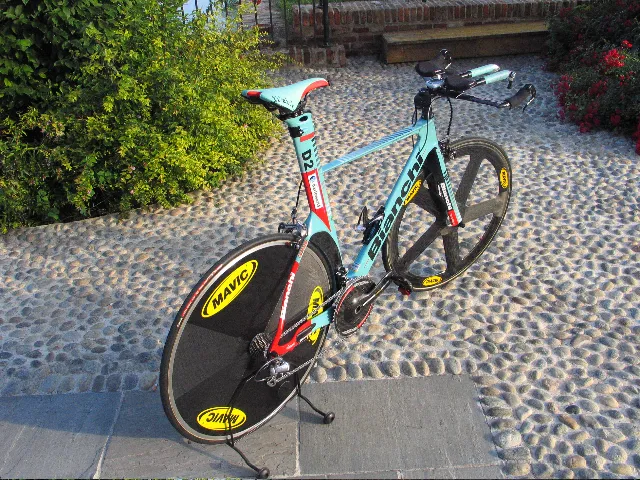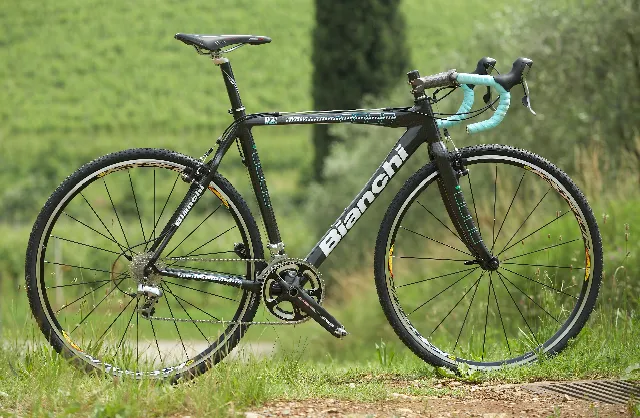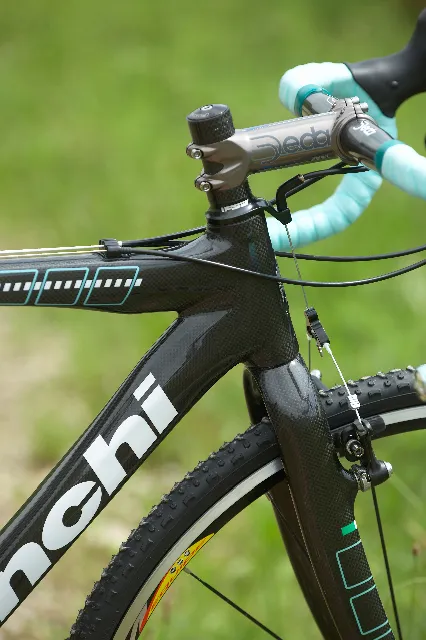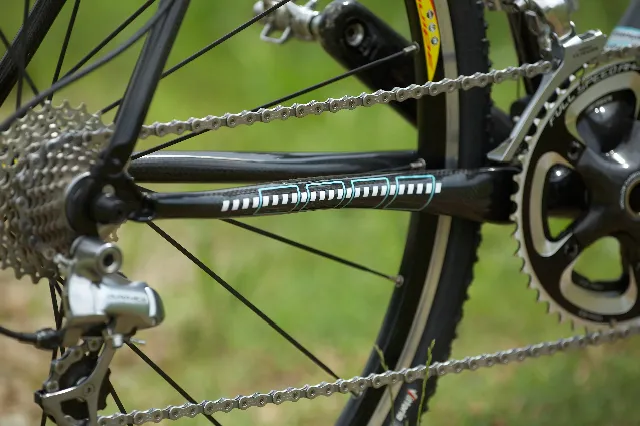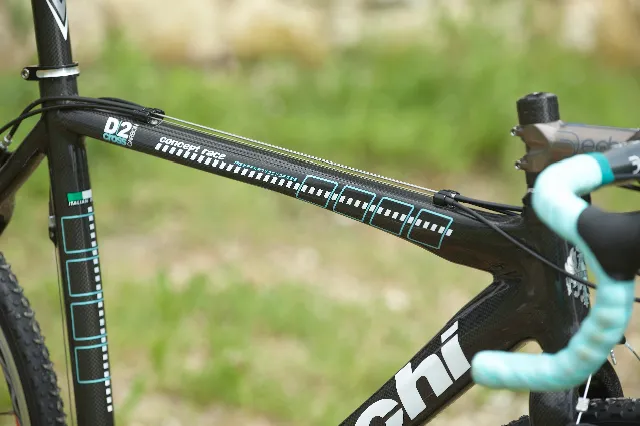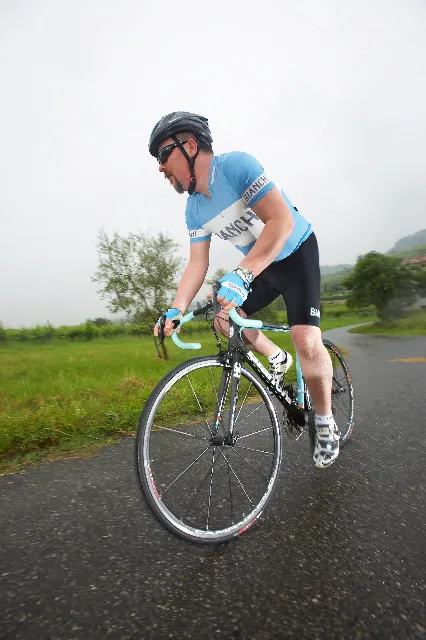In the second part of our look at Bianchi's 2009 range (see part I), we explore the newest entry to the fold and the updated D2 racing bikes. Here's the lowdown, straight from Bianchi's launch in Bergamo, Italy.
4P 928 Carbon Mono-Q
The newest entry to the Bianchi stable is a full high modulus IM600 carbon monocoque frameset, named the Mono-Q. It’s aimed to fit in the range below the current Carbon HoC’s and T-Cubes, making full-carbon Bianchi’s accessible to riders with less cash to spare.
So, what are the compromises over the high-end models? Well, the frame design is much simpler for a start, because less complex tube profiles mean Bianchi can use simpler moulds and those, in turn, make for a faster production rate that helps to keep costs down.
Up against the (figurative) HoC heavyweight, the Mono-Q doesn’t have the pro-spec rigidity and direct snappy feel, but unless you’re a top-flight racer or particularly taken by criterium racing this isn’t an issue. In fact, what could be seen to be a compromise in the Mono-Q is its greatest positive point. The smaller diameter carbon tubes and elegant super-slim wishbone seatstay (reminiscent of Cervelo’s R3SL) give the bike an individual appearance, which – in a world of supersized composite tubing – really stands out.
Cosmetics aside, these features give a ride that’s also unique. More by luck than judgement, Bianchi have created a frame that doesn’t ride like a carbon bike at all. The qualities of the material have been all but eliminated by the use of small tubing, and the svelte rear triangle produces a feel more akin to steel than composites.
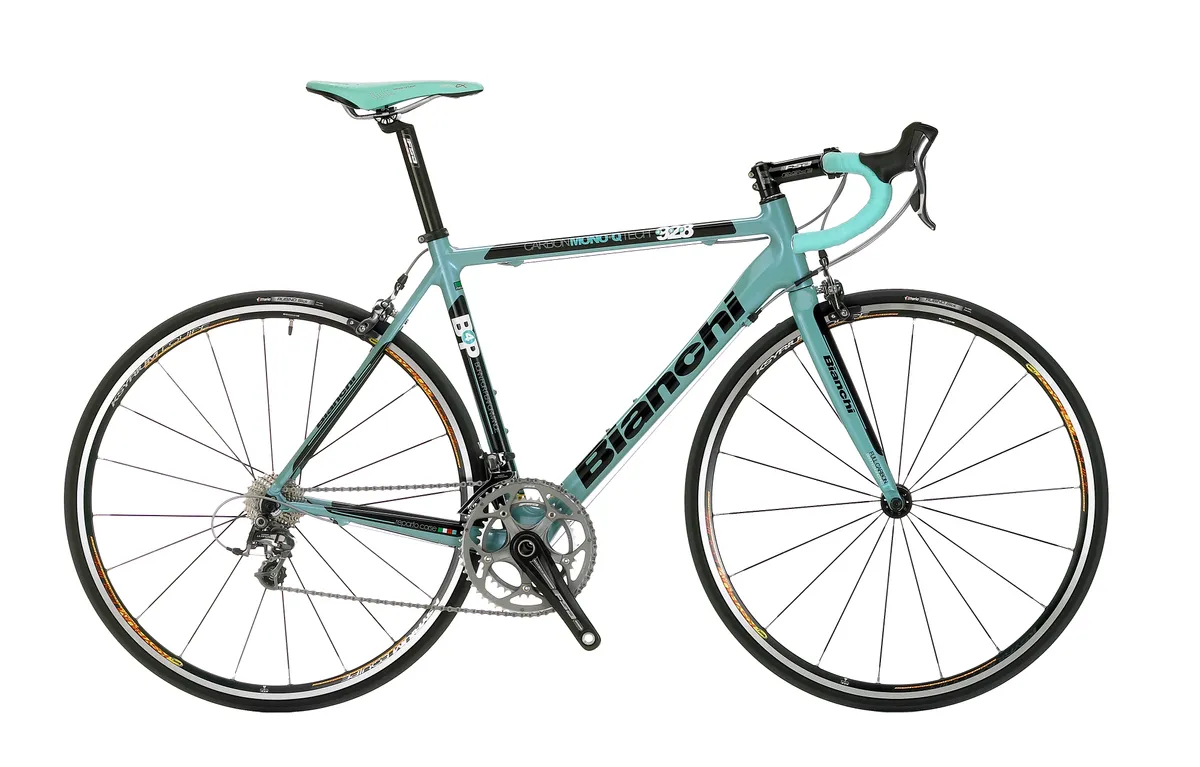
The Mono-Q rides like a steel bike, but weights just over a kilo
Riding the Mono out on the same roads in Bergamo as the HoC and S9, the difference was marked. It may not climb with the gazelle-like qualities of the HoC or have the race-bred appeal of the S9, but remember those are shod with pro-level groupsets and expensive wheelsets. The Mono-Q we rode, however, was running entry-level Veloce and Khamsin wheels, but it felt like so much more.
Handling was spot on – it’s quick with direction changes and light enough to climb well – and the frameset package feels so good that we would happily recommend you upgrade this bike as far as your wallet will allow. Should you take our advice, your options range from the Campagnolo Veloce 10 speed groupset up to the Centaur, passing into Shimano’s Dura-Ace, Ultegra and 105. Other spec highlights for us were the FSA short drop bars and the Bianchi RC finishing kit.
To describe the Mono-Q as an entry-level carbon does it a great disservice, because this is the star of the 2009 range. Its price is attainable, it offers a ride unlike anything available for the same money and if it’s your first foray into the world of composite bikes the ride qualities won’t shock you – except that you’ll suddenly be hauling just 1,100g around!
D2 Chrono
Bianchi christens all of its single event-specific bikes (track, cross, TT and triathlon) with the D2 monicker after the 1899 bike ridden in the French GP to winning success by Ferdinando Tommaselli.
Yet this D2 has little in the way of nods to the past. At its heart is an all-new wind-tunnel tested, aerodynamic carbon monocoque frame that’s constructed with nano technology carbon fibre. The design brief and carbon specification were to make a bike that could be adaptable to different against-the-clock disciplines, conform to stringent UCI standards and yet retain the lightweight qualities of a modern carbon frame.
The final version is a hell of an achievement as the frameset weighs in at just 1,350g – exceptionally light considering it includes the seatclamp and integrated mast.
The fork of the D2 is as deep an aero blade as the regulations allow. At the crown it has two swooped wings on either fork leg which blend into the front of the bike at the head-tube junction to keep air disruption to a minimum. The forks are a featherweight 450g, but for added strength they feature an inner wall at 90º to the blades.
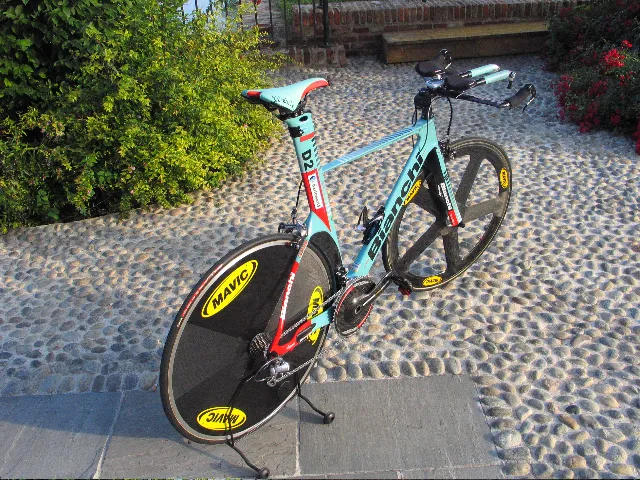
The chainstays have seen special attention with holes shot through the deep carbon section, simplifying the air path and creating a larger surface area which adds stiffness and strength. As well as the usual saddle rail adjustment, the 76º seat angle can be adjusted using the super long, specifically designed seatclamp, which allows a massive amount of adjustment fore and aft.
The spec of Team Barloworld’s D2 features a great deal of deviation from the standard ‘Dura-Ace throughout’ approach taken with many top pro-level machines.
As you’d expect, shifting duties are from the Dura-Ace stable (TT bar end shifters and rear mech) but the front mech is from FSA. This complements the FSA Carbon Neo Pro TT chainset. Brakes are also all-new FSA units, as is the aero bar set-up. Mavic provides the superb Comete carbon disc on the rear and there’s a track-derived iO aero wheel up front.
Bianchi is offering the 2009 Crono as a frameset, along with two versions packed with kit – the Crono Carbon Ultegra with FSA Gossamer TT cranks, Mavic Cosmic Elites, FSA Vision Trimax and Carbon Si bars, and the Crono Aluminium Ultegra – an alu-framed version of the bike with an FSA Vision Trimax alloy bar set-up. Prices are TBC but a full 2008 carbon D2 was £6,000!
D2 Ciclocross Carbon
This new for 2009 cross bike features a monocoque carbon frame constructed with Bianchi’s own UT500 carbon fibre, chosen because of its high elongation qualities (the amount it will bend or flex before failing). The 3k woven finish looks suitably classy and the oversized forks appear purposeful, but how does it ride?
Tracking the D2 through the vineyards of Bianchi’s test centre it felt nimble and quick, but not twitchy. The compact gearing helped keep the cadence high, even over more broken terrain, and the low drop FSA bars (shallow bends) are a great choice when the going gets rough.
A neatly designed top tube with top mounted cable runs and a scalloped underside makes shouldering the bike easy, and this shape feels stable, even if the slightly squared edges did dig in a couple of times when throwing it onto our shoulders.
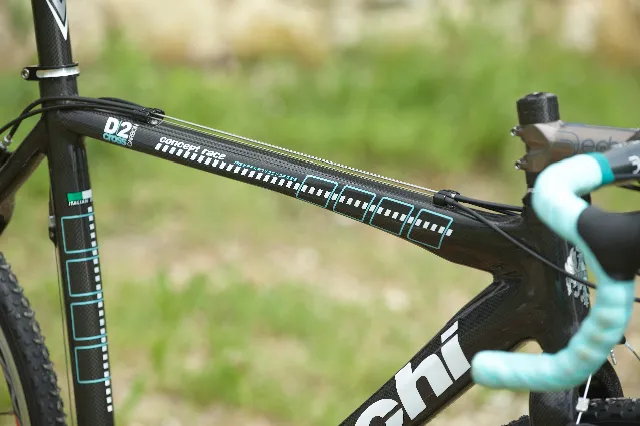
Designed with shouldering in mind, the D2 Cross is a stable shape for running
The frame itself weighs in at a not unreasonable 1,100g and it’s finished with a purposeful mix of high-end, dependable kit – Ultegra shifters, Dura-Ace rear mech, FSA Carbon cranks, and Mavic’s Ksyrium equipe wheels. This all adds up to a bike just nudging under the 18lb mark, excellent for a crosser.
The previous Bianchi crosser had some geometry which differed from the norm, but created a Cross bike dedicated to performance rather than an all-rounder. Happily, the new D2 keeps it that way. A shorter wheelbase of 101.5cm keeps the ride nimble and, when combined with a relatively low BB height (6.8cm), it helps to pick up the pace on less bumpy tracks. No price has been set as of yet, but if you already have some lighter cross wheels from a previous bike then you could end up starting the season with one of the lightest bikes on the line.
See also: First look: Bianchi road bikes 2009
